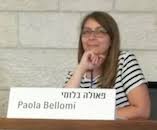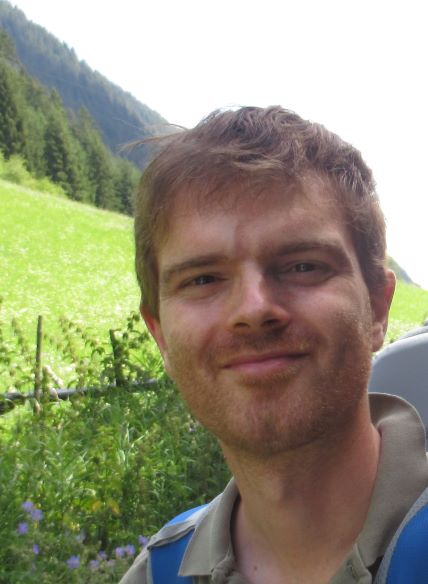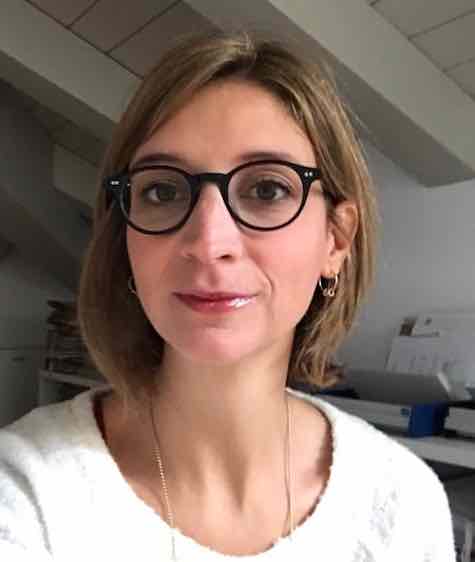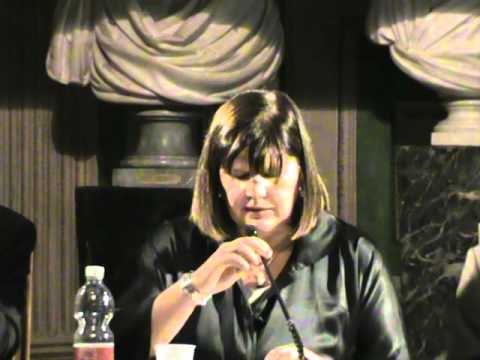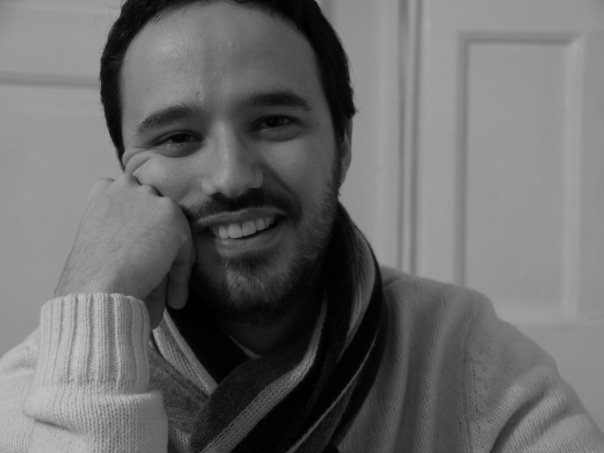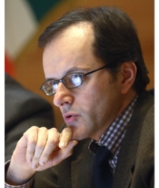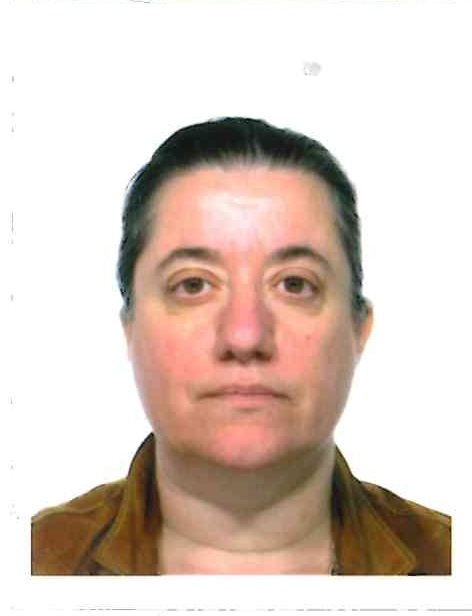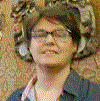Studying at the University of Verona
Here you can find information on the organisational aspects of the Programme, lecture timetables, learning activities and useful contact details for your time at the University, from enrolment to graduation.
Academic calendar
The academic calendar shows the deadlines and scheduled events that are relevant to students, teaching and technical-administrative staff of the University. Public holidays and University closures are also indicated. The academic year normally begins on 1 October each year and ends on 30 September of the following year.
Course calendar
The Academic Calendar sets out the degree programme lecture and exam timetables, as well as the relevant university closure dates..
| Period | From | To |
|---|---|---|
| I SEMESTRE | Oct 3, 2016 | Jan 21, 2017 |
| II SEMESTRE | Feb 27, 2017 | Jun 10, 2017 |
| Session | From | To |
|---|---|---|
| Lingue - SESSIONE INVERNALE | Jan 23, 2017 | Feb 25, 2017 |
| Lingue - SESSIONE ESTIVA | Jun 12, 2017 | Jul 29, 2017 |
| Lingue - SESSIONE AUTUNNALE | Aug 21, 2017 | Sep 23, 2017 |
| Session | From | To |
|---|---|---|
| Lingue - Sessione di laurea invernale | Apr 3, 2017 | Apr 8, 2017 |
| Lingue - Sessione di laurea estiva | Jul 10, 2017 | Jul 15, 2017 |
| Lingue - Sessione di laurea autunnale | Dec 18, 2017 | Dec 21, 2017 |
| Lingue - sessione di laurea invernale | Mar 23, 2018 | Mar 29, 2018 |
| Period | From | To |
|---|---|---|
| FESTA DI OGNISSANTI | Nov 1, 2016 | Nov 1, 2016 |
| FESTA DELL'IMMACOLATA CONCEZIONE | Dec 8, 2016 | Dec 8, 2016 |
| Vacanze Natalizie | Dec 23, 2016 | Jan 7, 2017 |
| Vacanze Pasquali | Apr 14, 2017 | Apr 18, 2017 |
| Festa della Liberazione | Apr 25, 2017 | Apr 25, 2017 |
| Festa dei Lavoratori | May 1, 2017 | May 1, 2017 |
| FESTA DEL SANTO PATRONO SAN ZENO | May 21, 2017 | May 21, 2017 |
| Festa della Repubblica | Jun 2, 2017 | Jun 2, 2017 |
| Vacanze Estive | Aug 14, 2017 | Aug 19, 2017 |
| Description | Period | From | To |
|---|---|---|---|
| ANNUALE | ANNUALE | Oct 3, 2016 | Jun 10, 2017 |
Exam calendar
Exam dates and rounds are managed by the relevant Foreign Languages and Literatures Teaching and Student Services Unit.
To view all the exam sessions available, please use the Exam dashboard on ESSE3.
If you forgot your login details or have problems logging in, please contact the relevant IT HelpDesk, or check the login details recovery web page.
Should you have any doubts or questions, please check the Enrollment FAQs
Academic staff
 valentina.adami@univr.it
valentina.adami@univr.it
 paola.bellomi@univr.it
paola.bellomi@univr.it
 daniele.beltrame@univr.it
daniele.beltrame@univr.it
 riccardo.cella@univr.it
riccardo.cella@univr.it
 elisa.dallarosa@univr.it
elisa.dallarosa@univr.it
 sara.dattoma@univr.it
sara.dattoma@univr.it
 federico.febbroni@univr.it
federico.febbroni@univr.it
 veronica.gobbato@univr.it
veronica.gobbato@univr.it
Hernandez Arocha Hector Eutimio
 hector.hernandez@univr.it
hector.hernandez@univr.it
 gianpaolo.lazzer@univr.it
gianpaolo.lazzer@univr.it
 stefania.montemezzo@univr.it
stefania.montemezzo@univr.it
 anna.morbiato@unive.it
anna.morbiato@unive.it
 chunye.niu@univr.it
chunye.niu@univr.it
 sara.paolini@univr.it
sara.paolini@univr.it
 valentina.savietto@univr.it
valentina.savietto@univr.it
 fabioantonio.scrignoli@univr.it
fabioantonio.scrignoli@univr.it
 alice.valdesalici@univr.it
alice.valdesalici@univr.it
Study Plan
The Study Plan includes all modules, teaching and learning activities that each student will need to undertake during their time at the University.
Please select your Study Plan based on your enrollment year.
1° Year
| Modules | Credits | TAF | SSD |
|---|
1st foreign language2nd foreign language1st foreign literature and cultureGerman literature and culture 1
2nd foreign literature and cultureGerman literature and culture 1
2° Year activated in the A.Y. 2017/2018
| Modules | Credits | TAF | SSD |
|---|
Italian literature and culture
Geography of communication and international trade
Modern and Contemporary Economic History
Theory and Techniques of communication
1st foreign language2nd foreign languageFirst language foreign literature and culture or a related courseEnglish literature and culture 2
German literature and culture 2
Spanish literature and culture 2
Second language foreign literature and culture or a related courseEnglish literature and culture 2
German literature and culture 2
Spanish literature and culture 2
3° Year activated in the A.Y. 2018/2019
| Modules | Credits | TAF | SSD |
|---|
Comparative and European Public law
Principles of international marketing
1st foreign language2nd foreign language| Modules | Credits | TAF | SSD |
|---|
1st foreign language2nd foreign language1st foreign literature and cultureGerman literature and culture 1
2nd foreign literature and cultureGerman literature and culture 1
| Modules | Credits | TAF | SSD |
|---|
Italian literature and culture
Geography of communication and international trade
Modern and Contemporary Economic History
Theory and Techniques of communication
1st foreign language2nd foreign languageFirst language foreign literature and culture or a related courseEnglish literature and culture 2
German literature and culture 2
Spanish literature and culture 2
Second language foreign literature and culture or a related courseEnglish literature and culture 2
German literature and culture 2
Spanish literature and culture 2
| Modules | Credits | TAF | SSD |
|---|
Comparative and European Public law
Principles of international marketing
1st foreign language2nd foreign language| Modules | Credits | TAF | SSD |
|---|
Legend | Type of training activity (TTA)
TAF (Type of Educational Activity) All courses and activities are classified into different types of educational activities, indicated by a letter.
Spanish language 2 [Tur] (2017/2018)
Teaching code
4S002918
Academic staff
Coordinator
Credits
9
Language
Spanish
Scientific Disciplinary Sector (SSD)
L-LIN/07 - LANGUAGE AND TRANSLATION - SPANISH
Period
Semester 2 dal Feb 26, 2018 al Jun 9, 2018.
Learning outcomes
The course aims at helping students:
- know the basic theoretical concepts of both Spanish and general Phonetics and Phonology
- know the phonetic and phonological system of Spanish (occasionally from a contrastive perspective)
- make aware of the different Spanish standards of pronunciation
- familiarize with the phonetic symbols as a way to visualize the pronunciation
- think about phonetic and phonological structures of both languages by means of phonetic transcriptions
--------------------------
El presente curso pretende ayudar a los estudiantes a
- conocer los conceptos básicos tanto del español como de la fonética y fonología generales
- conocer los sistemas fonético y fonológico del español (ocasionalmente desde una perspectiva contrastiva)
- familiarizarse con las distintas variedades del español
- familiarizarse con las transcripciones fonécticas como modo de representar la pronunciación
- reflexionar acerca de las estructuras fonético-fonológicas de ambas lenguas mediante su representación transcrita
Program
The aim of this course is to study several aspects of the Spanish Phonetics and Phonology. To achieve this goal, diverse phonetic and phonological subsystems should be analysed, specially the range of phonetic variation of the phonological systems according to the syllable structure, the phonological problems we face in the case of Spanish as a pluricentric language (in the sense put forward by Bierwach 2000) as well as the role of prosody for phonetic realisation. The expected goal is to make students able to produce accurate transcriptions of oral records by taking into account elementary theoretical and methodological concepts in Phonetics and Phonology.
----------------------------
En el presente curso se tratan algunos aspectos relativos al análisis fonético y fonológico de la lengua española. Para ello, se estudiarán los diversos subsistemas fonético/fonológicos del español, las diferentes realizaciones de tales subsistemas de acuerdo a la estructura de la sílaba, los problemas que se derivan de las varie¬dades del español, como lengua pluricéntrica (en el sentido de Weinreich 2000), para la proposición de unidades fonológicas así como aspectos relativos a su realización suprasegmental. El objetivo del objetivo seminario es habilitar al alumnado con conocimientos teórico-metodológicos para transcribir fonética y fonológicamente de forma adecuada textos orales del español en sus diversas variedades.
| Author | Title | Publishing house | Year | ISBN | Notes |
|---|---|---|---|---|---|
| Quilis, A. | El comentario fonológico y fonético de textos | Madrid: Arco Libros | 1999 | ||
| Lombardini, H. E. | "Fonética y fonología", in F. San Vicente (coord.) GREIT, Gramática de referencia de español para italófonos. I. Sonidos, grafias y clases de palabras, pagg. 1-46 | CLUEB | 2013 |
Examination Methods
The exam consists of a test on theoretical and practical questions related to the course program, the bibliography and the didactic materials provided in e-learning mode. Both the formulation of the questions and the answers will be made in writing and in Spanish. The test consists of open-ended questions, multiple-choice questions and exercises. Some require metalinguistic reflection, the ability to detect phenomena handled throughout the course and to provide examples of them. The grade will be determined by calculating the average between the score obtained in the linguistic competence (B2) and that obtained in the test of the subject. The results will be communicated through a notice published on the corresponding website ("Avvisi"). For students who do not attend class, the program and the form of evaluation are the same.
LINGUISTIC COMPETENCE REQUIRED:
Level 3 (ALTE), B2 (Council of Europe).
Assessment of linguistic competence will be on the grounds of certificates issued by the CLA (the University Linguistic Centre) or by other accredited institutions (see “Students’ Manual”, p. 25).
PREREQUISITES: Students taking this exam must have already passed the exams of Spanish Language and Literature of the 1st year.
Erasmus students should contact the teacher.
---------------------------------
El examen consiste en una prueba escrita sobre cuestiones teóricas y prácticas relativas al programa del curso, la bibliografía de lectura obligada y los materiales didácticos proporcionados en modalidad e-learning. Tanto la formulación de las preguntas como la de las respuestas serán efectuadas por escrito y en lengua española. La prueba se compone de preguntas abiertas, preguntas con opción múltiple y ejercicios. Algunas preguntas requieren reflexión metalingüística, capacidad de detectar fenómenos tratados a lo largo del curso y de proporcionar ejemplos de los mismos.
Para los alumnos que no asisten a clase, el programa y la forma de evaluación son los mismos.
COMPETENCIA LINGÜÍSTICA: Nivel 3 (ALTE), B2 (Marco de Referencia Europeo para las Lenguas): Centro Linguistico di Ateneo o Instituto Cervantes (Nivel Superior). La competencia lingüística es propedéutica.
OTROS REQUISITOS: Superación de las asignaturas obligatorias y previas de Lengua española 1 y Literatura española 1.
La nota se determinará calculando la media entre la puntuación obtenida en la competencia lingüística (B2) y la obtenida en la prueba de la asignatura.
Los resultados se comunicarán a través de un aviso publicado en la página web correspondiente (“Avvisi”).
Type D and Type F activities
To discover all the teaching activities accredited by the foreign teaching college click here
Career prospects
Module/Programme news
News for students
There you will find information, resources and services useful during your time at the University (Student’s exam record, your study plan on ESSE3, Distance Learning courses, university email account, office forms, administrative procedures, etc.). You can log into MyUnivr with your GIA login details: only in this way will you be able to receive notification of all the notices from your teachers and your secretariat via email and soon also via the Univr app.
Student login and resources
Gestione carriere
Assegnazione tutore
Attività accreditate D/F
Calendario didattico dettagliato
Cambio lingua curriculare
Competenze informatiche
Competenze linguistiche (prima e seconda lingua)
Competenze linguistiche in triennale (terza lingua CFU F)
Compilazione del piano didattico
Corso di Lingua portoghese
Erasmus+ e altre esperienze all'estero
Linguistic training CLA
Presentazione dei corsi di studio e Open day
Graduation
List of theses and work experience proposals
| Stage | Research area |
|---|---|
| PROGETTO MAMBRINO Stage per bibliografia | Various topics |
Saperi minimi
Stage e tirocini
Nel piano didattico della laurea triennale in Lingue per il turismo e il commercio internazionale (L12) è previsto un periodo di stage obbligatorio (CFU 6) in organizzazioni imprenditoriali.
Le attività di stage sono finalizzate a far acquisire allo studente una conoscenza diretta in settori di particolare interesse per l’inserimento nel mondo del lavoro e per l’acquisizione di abilità professionali specifiche.
Le attività di stage sono svolte sotto la diretta responsabilità di un singolo docente presso studi professionali, enti della pubblica amministrazione, aziende accreditate dall’Ateneo veronese.
I crediti maturati in seguito ad attività di stage saranno attribuiti secondo quanto disposto nel dettaglio dal “Regolamento d’Ateneo per il riconoscimento dei crediti maturati negli stage universitari” vigente.
- Tutte le informazioni in merito agli stage per futuri studenti sono disponibili alla pagina Stage e tirocini.
- Tutte le informazioni in merito agli stage per studenti iscritti sono pubblicate in MyUnivr - come fare per - stage e tirocini.
- Tutte le informazioni in merito agli stage per le aziende sono disponili alla pagina Stage e tirocini per azienze.
Ulteriori informazioni al seguente link https://www.univr.it/it/i-nostri-servizi/gestione-carriere-studenti-lingue-e-letterature-straniere/stage-e-tirocini-lingue-e-letterature-straniere


 +39 045802 8409
+39 045802 8409
